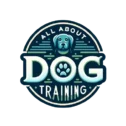Master the Art of Canine Coaching: Advanced Dog Training Tips
Introduction to Advanced Dog Training
Once basic obedience is solidly established for your dog, the next step is often advanced dog training. This form of training is meant to increase your dog's skills and responsiveness beyond the basics, promoting better bonding, performance, and obedience. Before proceeding to the advanced level, it is crucial to confirm your dog can consistently follow commands like "Come", "Sit", "Stay", and "Down".

Beginner to Advanced – Transition Process
The transition from basic training to advanced training should not be abrupt. The sophistication of advanced tasks may be daunting for both you and your dog in the initial phase. Gradually introducing advanced tasks, starting with relatively simple ones, leads to a more successful transition.
In advanced training, task repetitions are reduced, with more trust placed on the dog's ability to follow commands. It involves teaching dogs more complex commands, honing perfection in execution, and working towards commands being followed regardless of the surrounding distractions. This form of training can also be customized to fit the dog’s lifestyle, breed, and your personal preferences.
Importance of Consistency
Consistency is vital in advanced dog training. The cues, commands or signals used to instruct dogs should remain the same throughout. Changing instructions could lead to confusion and delay the training process for your dog. Establishing a consistent routine also allows your dog to adapt more easily to advanced commands.
Advanced Training Techniques and Commands
While there are various techniques, it is essential to adopt a strategy suited to your dog's temperament. From 'Heel' to 'Fetch', advanced training techniques involve teaching dogs to follow a complex set of instructions.
Heel
'Heel' is a command that trains your dog to position itself correctly by your side, matching your pace no matter the speed or direction you're moving. 'Heel' focuses on the dog's positioning and pace relative to you.

Fetch
While 'Fetch' may seem like a basic command, a true fetch is when a dog not only retrieves an object but drops it at your feet or places it in your hands. Training a dog to fetch involves complex commands and can be considered an advanced skill.
Leave it/Drop it
'These commands teach dogs to refrain from picking up or to release items. This is particularly useful to keep dogs safe from harmful objects or toxic foods.
Emergency Recall
This is an essential command that ensures the safety of your dog. A strong recall command is critical if your dog dashes toward a busy road or another dangerous situation, ensuring they return immediately when called.
Understanding Your Dog's Signals
Advanced dog training further emphasizes understanding your dog's signals and body language. Recognizing these signals improves dog-owner communication, effectively making training more efficient. When you understand your dog better, you also improve the bond you share with your pet.

Barking Patterns
Identifying different types of barking can indicate your dog’s emotional state, whether they're anxious, excited, or sensing danger. Interpreting these patterns offers critical insights into your dog's behavior.
Tail Wagging
The direction and speed of tail wagging can express various emotions – happiness, fear, or even aggression. Learning to comprehend these signals allows effective communication with your dog.
Reward-Based Training
A significant aspect of advanced dog training is reward-based or positive reinforcement training. This training style reinforces positive behavior by giving dogs a reward when they correctly follow a command. This reward can be in the form of treats, toys, or affection, forming a positive association with following the command.
Reward-based training tends to create more reliable, long-term results by enhancing the dog’s morale and eagerness to learn. Remember, patience is integral, as some dogs may require a considerable amount of time to pick up new skills.

Frequently Asked Questions
1. When can I start advanced dog training?
You can start once your dog has mastered basic obedience and displays consistent behavior. It's crucial to begin advanced training sooner, rather than later, to prevent the development of bad habits.
2. Can advanced training control aggressive behavior in dogs?
Yes, advanced training can help manage aggression by teaching dogs how to respond to triggers positively. However, severe aggression issues may require the support of a professional dog trainer.
3. How long does advanced training typically take?
Training duration varies based on the dog's temperament, breed, age, and master's consistency. However, typically a few months are sufficient to master most advanced skills.
Conclusion
Advanced dog training takes time, consistency, and commitment but produces well-rounded, obedient dogs. Training regimes should be tailored to suit your dog’s individual needs and personality, which will serve to boost their learning. Remember, patience and perseverance are key. With time, your pet will not only grow in obedience but also in their loyalty and trust towards you.

